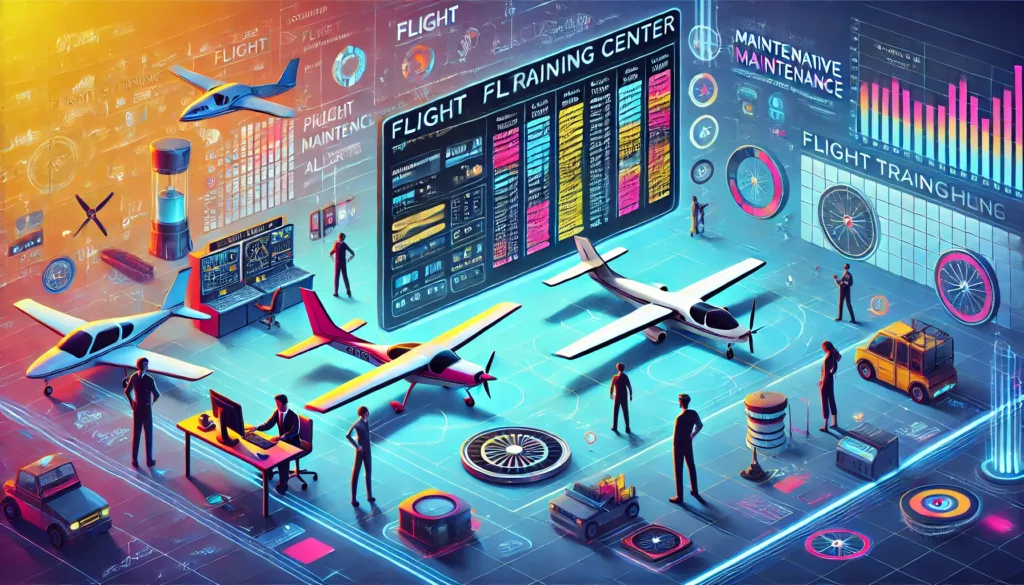
In the ever-evolving landscape of aviation, automation is proving to be a game-changer, particularly in the realm of flight training management. The integration of automated systems is not just enhancing operational efficiency, but also significantly improving the quality of training provided to aspiring pilots.
This post delves into the transformative impact of automation on flight training management, exploring its benefits, applications, and the future it promises for aviation education.
Table of Contents
The Evolution of Flight Training Management
Traditionally, flight training management relied heavily on manual processes. Scheduling, maintenance tracking, billing, and lesson planning were often managed through cumbersome spreadsheets or basic software solutions. While these methods were functional, they were prone to errors, time-consuming, and inefficient.
The aviation industry’s growth and the increasing demand for trained pilots necessitated a shift towards more sophisticated and reliable management systems. Enter automation—an innovation that has revolutionized flight training management by streamlining operations and enhancing accuracy.
Benefits of Automation in Flight Training Management
1. Efficiency and Time Savings
Automation significantly reduces the time and effort required to manage flight training operations. Scheduling software with drag-and-drop functionality allows flight schools to quickly and easily allocate resources, manage bookings, and adjust schedules. This efficiency frees up valuable time for instructors and administrative staff, allowing them to focus more on training and less on logistics.
2. Enhanced Accuracy and Reliability
Human error is an inherent risk in manual management systems. Automated flight training management software minimizes these errors by providing accurate and reliable data. Maintenance schedules, flight logs, and billing information are automatically updated and tracked, ensuring that nothing falls through the cracks.
“Automation significantly reduces the time and effort required to manage flight training operations, freeing up valuable time for instructors and staff to focus more on training and less on logistics.”
3. Improved Maintenance Tracking
Predictive maintenance tools are a significant advancement in flight training management. These tools use real-time data to predict when maintenance is needed, preventing unexpected breakdowns and ensuring aircraft are always in optimal condition. This not only enhances safety but also reduces downtime and maintenance costs.
4. Better Financial Management
Automated billing systems simplify the financial aspects of flight training management. With integrated payment processing and seamless QuickBooks integration, flight schools can manage their finances more effectively. Automated invoicing and payment tracking ensure timely payments and reduce administrative burdens.
5. Customizable Learning Management Systems (LMS)
Automation in flight training management extends to the educational aspects as well. Customizable LMS platforms allow schools to design tailored lesson plans, track student progress in real-time, and identify at-risk students. This personalized approach enhances the learning experience and ensures that each student receives the support they need.
Applications of Automation in Flight Training Management
1. Scheduling and Resource Allocation
Automated scheduling systems are at the heart of efficient flight training management. These systems allow schools to manage bookings, instructor availability, and aircraft usage effortlessly. Advanced features such as conflict detection and automatic rescheduling ensure optimal resource utilization.
2. Maintenance Management
Automation in maintenance management involves tracking aircraft usage and predicting maintenance needs. Systems equipped with real-time data integration can schedule maintenance based on actual usage rather than fixed intervals, ensuring aircraft are maintained at the right time.
3. Financial Transactions and Billing
Automated billing systems handle everything from invoicing to payment processing. Integration with financial software like QuickBooks provides a seamless flow of financial data, making it easier to manage accounts, payroll, and financial reporting.
4. Learning Management Systems
LMS platforms equipped with automation features allow flight schools to create, manage, and update training programs efficiently. Real-time grading, customizable lesson plans, and performance tracking help instructors monitor student progress and address any issues promptly.
5. Communication and Reporting
Automation tools enhance communication within the flight training environment. Automated notifications and reminders keep students and instructors informed about schedule changes, upcoming maintenance, and important deadlines. Reporting tools provide detailed insights into various aspects of flight training management, helping schools make data-driven decisions.
PreFlight: Leading the Charge in Automated Flight Training Management
At the forefront of this revolution is PreFlight, a comprehensive flight training management solution designed to meet the unique needs of flight schools, flying clubs, universities, and charter operations. PreFlight’s advanced features and user-friendly interface make it an invaluable tool for modern aviation education. Visit PreFlight to learn more about how PreFlight can streamline your flight training management and bring unparalleled efficiency to your operations.